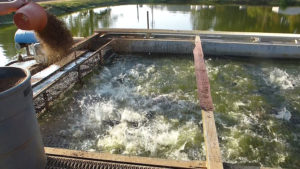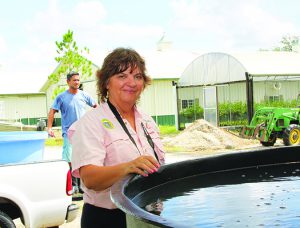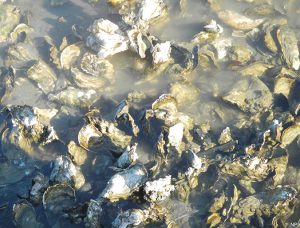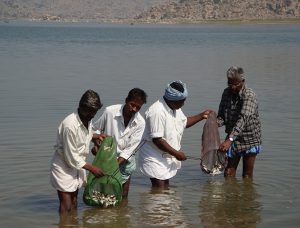
Going deep on offshore aquaculture
Open-ocean aquaculture, the “new kid on the block” in the rapidly growing aquaculture industry, was examined at a California Academy of Sciences event. New contributor Twilight Greenaway reports.
Much work is needed to properly address and prepare for the potential impacts of climate change, and to continue increasing the contribution of seafood production to feed a growing human population.

Open-ocean aquaculture, the “new kid on the block” in the rapidly growing aquaculture industry, was examined at a California Academy of Sciences event. New contributor Twilight Greenaway reports.

In-Pond Raceway System technology, developed at Auburn University, continues to evolve with improvements in design, construction and more efficient operation.

A promising strategy to increase fish production in static aquaculture ponds, the In-Pond Raceway System (IPRS) grows fish confined at high densities in floating or fixed raceways, instead of the animals being free in the pond.

German researcher believes that floating fish feces would help recirculating aquaculture systems more efficiently remove suspended solids.

The Coriolis effect has no bearing on aerator placement and aquaculture pond management. The most important consideration with mechanical aeration is to provide a sufficient amount to maintain adequate dissolved oxygen concentration.

This study of agricultural limestone from five different U.S. quarries determined that the samples had comparable chemical compositions but somewhat different solubilities in water. This procedure might be helpful in achieving better results when these products are used in the liming of aquaculture ponds.

The latest Champions of Change awards celebrated the work of change-makers in sustainable seafood, from chefs to fishermen to aquaculture advocates. With innovation and perseverance, the industry may soon meet its vast potential.

It is one of the most commonly measured water quality variables in aquaculture, and probably the most misunderstood water quality variable in aquaculture. The pH levels in water have a propensity to change rapidly, but this is a natural phenomenon that often has little consequences and not much can be done to avoid it.

There are similarities and differences between the various aquaculture certification programs but until recently there has been little publicly available analysis to document those points. Michael Tlusty, director of ocean sustainability science at the New England Aquarium, provided it at GOAL 2016.

When one of California’s oldest oyster farms was shut down amid reports that it was degrading the environment, local observers took notice. Two years later, the case is still far from closed in the eyes of the farm’s supporters and its critics.

The idea that fish farms’ health and safety are interconnected is not new. Even the best-run farms are not protected from diseases or pollution from another farm close by, so further measures are necessary, argues Anton Immink of Sustainable Fisheries Partnership.

After some rocky times, ties between B.C. salmon farmers and First Nations, have improved in recent years. Band members report consistent employment, royalties and improved quality of life. “We need aquaculture around,” says one fishing company owner.

The co-culture of rice and fish, or paddy-cum-fish culture, is a very old practice in many countries around the world, including some of India’s northeastern states, where it is extensively practiced. Various carps and tilapia species can be cultured while efficiently producing larger yields of rice.

Understanding the hydrologic cycle, water’s unique physical properties and their behavior in aquaculture systems – phases, humidity, saturation, stratification, light reflection and refraction – is pertinent to properly manage water quality in production systems, according to world-renowned expert Dr. Claude Boyd.

Reservoirs cover about 3 million hectares of surface area in India, and are a growing resource with enormous potential for increasing their fisheries and extensive aquaculture yield, as well as a source of increased employment.